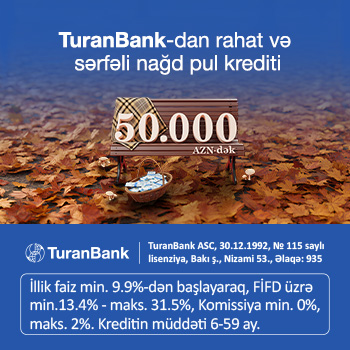Azərbaycanın suveren kredit reytinqi təsdiqləndi
S&P Azərbaycanın suveren reytinqini “BB+/B” səviyyəsində təsdiqləyib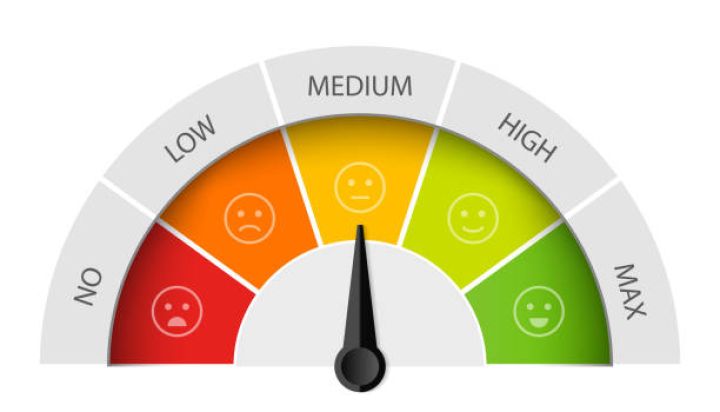
“S&P Global Ratings” beynəlxalq reytinq agentliyi Azərbaycanın xarici və milli valyutalarda uzunmüddətli və qısamüddətli suveren kredit reytinqlərini sabit proqnozla “BB+/B” səviyyəsində təsdiqləyib.
S&P-nin yaydığı məlumata görə, "sabit" proqnoz neft hasilatının proqnozlaşdırılan ortamüddətli azalmasına baxmayaraq, gələn il əlverişli karbohidrogen qiymətlərinin Azərbaycanın maliyyə vəziyyətini və tədiyyə balansını dəstəkləyəcəyi ilə bağlı gözləntiləri əks etdirir.
"Azərbaycan gözlədiyimizdən daha uzun müddət ərzində daha yüksək xarici profisit saxlayarsa, bu, xarici aktivlərin əhəmiyyətli dərəcədə əlavə yığılmasına səbəb olarsa, biz yüksəlişi nəzərdən keçirə bilərik. Hökumət bəzi struktur maneələri, o cümlədən iqtisadiyyatın və pul siyasətinin effektivliyinə dair məhdudiyyətləri aradan qaldırmaq üçün islahatlar keçirsə, reytinqlər də yüksələ bilər”, - məlumatda deyilir.
Agentliyin analitiklərinin fikrincə, Azərbaycanın güclü fiskal və xarici səhm mövqeləri suveren reytinqlər üçün əsas dəstəkdir.
"Hökumət, əsasən, Azərbaycan Dövlət Neft Fondundan (ARDNF) əhəmiyyətli likvid aktivlər toplayıb. Bizim proqnozlarımıza görə, hökumətin 2026-cı ilə qədər ÜDM-in təxminən 55%-i həcmində likvid aktivlərə və ümumi hökumətə çıxış imkanı olacaq, borc ÜDM-in 2022-ci ilin sonunda təxmin edilən 19%-dən 2026-cı ilə qədər tədricən ÜDM-in 17%-nə düşəcək. Mövcud güclü inventar mövqeyinə əlavə olaraq, əlverişli neft qiymətləri də Azərbaycanın fiskal və tədiyə balansının icrasına dəstək verməlidir.
XXX
Azerbaijan Ratings Affirmed At 'BB+/B'; Outlook Stable
We project Azerbaijan will run sizable twin surpluses on average over 2023-2026, supported by favorable prices for oil, its key export item.
Nevertheless, the country's key oil fields are aging and production is on a declining trend, which new gas exports are unlikely to fully offset. Significant liquid assets, accumulated within the sovereign wealth fund, State Oil Fund of the Republic of Azerbaijan, partially mitigate these risks.
Azerbaijan and Armenia appear to be approaching an agreement over the status of Karabakh, following the military conflict in 2020 and several subsequent reported flare-ups.
We affirmed our 'BB+/B' long- and short-term sovereign credit ratings on Azerbaijan. The outlook is stable.
Rating Action
On June 9, 2023, S&P Global Ratings affirmed its 'BB+/B' long- and short-term foreign and local currency sovereign credit ratings on Azerbaijan. The outlook is stable.
Outlook
The stable outlook reflects our expectation that favorable hydrocarbon prices will support Azerbaijan's fiscal and balance-of-payments positions over the next year, despite a projected medium-term decline in oil production.
Downside scenario
We could lower the ratings if Azerbaijan's fiscal balances prove weaker than we expect over the medium term. This could happen, for example, because aging oil fields result in oil production declining faster than we expect. Reduced hydrocarbon revenue could also weigh on Azerbaijan's broader economic prospects, with real per capita GDP growth falling further below that of peers at a similar level of economic development. We could also lower the ratings if the conflict in Karabakh were to reignite significantly.
Upside scenario
Conversely, we could consider an upgrade if Azerbaijan sustains higher external surpluses for longer than we expect, resulting in sizable additional external asset accumulation. Ratings upside could also build if the government implements reforms addressing some of Azerbaijan's structural impediments, including the undiversified nature of its economy and constraints on monetary policy effectiveness.
Rationale
Azerbaijan's strong fiscal and external stock positions are a key support for the sovereign ratings. The government has accumulated substantial liquid assets, mainly within the sovereign wealth fund, the State Oil Fund of the Republic of Azerbaijan (SOFAZ). We forecast that the government will have access to liquid assets of close to 55% of GDP through 2026 and that gross general government debt will gradually moderate to 17% of GDP by 2026 from an estimated 19% of GDP at end-2022. In addition to existing strong stock positions, favorable oil prices should also support Azerbaijan's budgetary and balance-of-payments performance.
Nevertheless, Azerbaijan's economy remains concentrated on the oil and gas sector, which accounts for close to 50% of the country's nominal GDP. Consequently, Azerbaijan remains vulnerable to any potential adverse changes in hydrocarbon prices. Our ratings on Azerbaijan also remain constrained by weak institutional effectiveness and limited monetary policy flexibility.
Institutional and economic profile: A gradual decline in oil production over the medium term as key fields continue to age
We expect Azerbaijan to exhibit muted growth prospects over 2023-2026 against the background of a long-term gradual decline in oil output.
Azerbaijan remains a member of the OPEC+ group of countries, but production has been unaffected by the recent decisions on production cuts, because it has persistently produced below its allocated level for the past few years.
Azerbaijan's institutional environment remains relatively weak and political power is centralized in the presidential administration.
Azerbaijan's economy is significantly dependent on the hydrocarbon sector, with oil and gas constituting 90% of exports and about 50% of GDP. It currently benefits from favorable oil prices, which, in turn, support Azerbaijan's fiscal and balance-of-payments positions. Following an estimated average Brent oil price of almost $100 per barrel (/bbl) in 2022, we expect that oil prices will average a still-high $86/bbl in 2023 and $85/bbl thereafter (see "S&P Global Ratings Revises Approach To Determining Its Hydrocarbon Price Decks; Changes Definition Of Long-Term Price," published April 20, 2023, on RatingsDirect).
Azerbaijan mainly exports hydrocarbons to the European region: Italy accounts for about 45% of Azerbaijan's total oil exports, with other EU countries accounting for an estimated further 25%. Italy is also the largest market for gas exports, accounting for an estimated 50% of the total, followed by Turkiye (around 35%) and Georgia (around 10%).
However, while oil prices have been favorable, Azerbaijan's production volumes have continued to decline. Azerbaijan is one of the oldest oil producers in the world, having started industrial oil production in the 19th century. Existing oilfields (particularly the key Azeri-Chirag-Deepwater Gunashli [ACG] field) are aging, so their output is gradually reducing for natural reasons. Between 2010 and 2021, for instance, oil production (including natural gas liquids) dropped by 30% to an estimated 0.74 million barrels per day (mbpd) from over 1 mbpd. Oil production dropped by a further 5% in 2022 to 0.70 mbpd.
We expect oil production will continue declining over the medium term, but at a slightly more gradual pace, with output dropping by about 7% cumulatively over 2023-2026. This is because the Azeri Central East project--the latest stage of the ACG development--is scheduled to come onstream in 2024, and at its peak is expected to produce 100,000 bpd. Nevertheless, we expect that production ramp-up will be gradual, while elsewhere the production decline will persist, so the net trend will still be for slightly falling oil output.
Azerbaijan remains a member of the OPEC+ group of countries and is therefore subject to the latest production quota for crude oil of 0.55 mbpd for 2024. However, its actual crude oil production (excluding natural gas liquids, which are not subject to the OPEC+ quota) so far in 2023 has averaged close to 0.52 mbpd, because of structural production constraints.
In contrast with oil, the outlook is stronger for Azerbaijan's gas sector. Production at the new Shah Deniz II gas field commenced in 2018, and two related pipelines--the Trans-Anatolian Natural Gas Pipeline and the Trans Adriatic Pipeline, carrying gas to Turkiye and Europe, respectively--became operational in 2019 and 2020. Consequently, we estimate that between 2017 and 2022, Azerbaijan's gas production rose by 90% to 34 billion cubic meters (bcm). Nevertheless, even considering this recent production ramp-up, we expect that gas exports will play a relatively modest role in Azerbaijan's economy compared with oil, and are unlikely to fully offset the oil production decline. We also note that European gas prices have moderated significantly from the highs exhibited in the second half of 2022 and have recently dropped below the levels experienced just before the start of the Russia-Ukraine war.
We estimate that most gas production ramp-up from the second stage of Shah Deniz has already happened and gas output will only slightly increase, by an additional 7% cumulatively, through 2026. The key South Caucasus Pipeline is operating at close to full capacity, so any additional net gas exports in the future, including to Europe, will require further expansion of the pipeline infrastructure.
Azerbaijan's non-oil sector exhibited strong growth in 2022, up 9% year on year. The favorable trend has been fairly broad-based in terms of subsectors, with cargo transportation (13% growth in volumes of cargo), passenger transportation (a 34% rise in passenger numbers), IT (15% growth), and industrial production excluding the oil and gas sector (7% growth) exhibiting strong dynamics. That said, we expect the momentum to gradually slow, partly because of base effects (it is likely that previous growth at least partially represents a post-pandemic rebound), but also because of limited progress in economic diversification and structural reforms in recent years.
Overall, we forecast Azerbaijan's real GDP will stagnate in 2023, which is in line with our previous December 2022 forecast. While the non-oil sector will continue to grow and there will be some increase in gas production in 2023, lower oil output will be a drag. Declining oil production will continue to weigh on growth over the medium term and we forecast an average real growth of 1.4% over 2024-2026. We view this as comparatively modest for a developing emerging market economy.
In our opinion, Azerbaijan's institutions remain weak. They are characterized by highly centralized decision-making, which can make policy responses difficult to predict. Political power remains concentrated with the president and his administration, and there are limited checks and balances. In our view, structural reforms and economic-diversification efforts have yielded only limited results in recent years.
We also consider that Azerbaijan continues to suffer from material gaps in reported data. For instance, there are no volume national income accounts available broken down by expenditure and there is no international investment position data available for the economy overall. However, the sovereign wealth fund, SOFAZ, provides significant detail and timely disclosure of its asset composition.
Following a six-week war in Karabakh that started in September 2020, Azerbaijan and Armenia agreed to a Russia-brokered ceasefire that took effect on Nov. 10, 2020. However, skirmishes have broken out since then, one of which was in September 2022, with significant reported casualties. More recently, there have been signs that the two countries are approaching a longer-term agreement on the status of Karabakh and on broader bilateral relations, following negotiations in May 2023 held in Moscow.
Flexibility and performance profile: Sizable assets accumulated within the sovereign wealth fund are a key ratings support
We project Azerbaijan will post 4% of GDP general government and 18% of GDP current account surpluses in 2023.
In our view, Azerbaijan will retain an average general government net asset position of around 40% of GDP through 2026.
Monetary policy effectiveness remains limited, constrained by the central bank's limited operational independence, heavy intervention in the foreign exchange market, and underdeveloped local currency capital markets.
We consider that Azerbaijan's strong external stock position will remain a core rating strength, reinforced by the large amount of foreign assets accumulated at SOFAZ. We estimate that external liquid assets will surpass external debt through 2025 and the net international investment position will average 65% of GDP in 2023-2026. Although Azerbaijan remains vulnerable to potential terms-of-trade volatility, we consider that its large net external asset position will serve as a buffer that could mitigate the potential adverse effects of economic cycles on domestic economic development. Based on our oil price and production forecasts, we expect that Azerbaijan's current account surplus will average 15% of GDP over 2023-2026, following a record 30% of GDP current account surplus in 2022, the highest level in over a decade.
Azerbaijan's net fiscal asset position remains strong, mirroring its external position and supporting the sovereign ratings. The general government surplus was 6.1% of GDP in 2022 and we forecast surpluses to persist over the medium term, gradually declining toward balance by 2026 as expenditure increases, while a continued gradual decline in oil output will weigh on government revenue. Despite a rapid increase in natural gas production volumes in recent years, we consider that the fiscal receipts for the government from this source will remain significantly lower than from oil. For instance, even with the much higher market prices for gas last year, the proceeds from gas sales amounted to about $1 billion (1.3% of GDP) compared with $10 billion (13% of GDP) for oil sales from the ACG field.
We expect that the net general government asset position will remain about 40% of GDP through 2026. In calculating net general government debt, we include our estimate of SOFAZ's external liquid assets. We exclude less-liquid exposures equivalent to about 14% of 2022 GDP--including the fund's domestic investments and certain equity exposures abroad--because we consider that they could not be liquidated quickly when needed. Azerbaijan is far more transparent than many of its peers (such as those in the Gulf Cooperation Council) about the composition of its assets and size of the sovereign wealth fund. For example, SOFAZ publishes detailed audited annual reports with granular information on the categories of investments it holds.
The government owns a majority stake in the International Bank of Azerbaijan (IBA) and in 2017 restructured the bank and assumed some of its debt. The government has also transferred IBA's nonperforming loans--with a book value of about Azerbaijani manat (AZN) 10 billion--to AqrarKredit, a state-owned nonbanking credit organization funded by the Central Bank of Azerbaijan. There is a government guarantee on the loans provided to AqrarKredit by the central bank. We therefore include AqrarKredit's sovereign-guaranteed loans of AZN9.5 billion in general government debt.
Excluding the guaranteed debt of AqrarKredit, Azerbaijan's direct government debt is low, estimated at around 11% of GDP at the end of 2022. Of this, around a quarter is domestic debt denominated in local currency while the rest represents external foreign-currency denominated debt. Azerbaijan is planning to gradually shift away from foreign to more domestic funding.
We assume that Azerbaijan will retain the manat's de facto peg to the U.S. dollar at AZN1.7 to $1.0, supported by the authorities' regular interventions in the foreign-currency market. Nevertheless, in our view, should hydrocarbon prices drop sharply and remain low for a prolonged period, the authorities could consider adjusting the exchange rate. This would help avoid a substantial loss of foreign-currency buffers, similar to the central bank's actions in 2015.
Like most other emerging and advanced economies, Azerbaijan's inflation has continued to exceed our forecasts, surpassing levels over 2016-2017, when prices rose significantly following the 2015 manat devaluation. Current upward price pressures are driven by the effects of the post-pandemic reopening, food price inflation, and global trends, since Azerbaijan imports a wide range of goods from abroad and foreign inflation developments affect it significantly. We now forecast that inflation will average 12% in 2023, down from almost 14% in 2022. It should thereafter gradually slow to 5% through to 2025. The Central Bank of Azerbaijan has been progressively tightening monetary policy in response.
We consider Azerbaijan's banking system to be broadly stable, with overdue loans continuing on a downward trend and reaching 2.9% at end-2022, although we consider that they could increase moderately to 3.5%-4% in 2023. The financial sector remains small, with total assets of under 50% of GDP, which limits possible contingent liability risks for the government. Nevertheless, Azerbaijan's banking system is characterized by several persistent structural vulnerabilities, including the still-high levels of dollarization of deposits, despite a recent decline; weak governance and transparency in an international context; and relaxed lending and underwriting standards. For more details on Azerbaijan's banking sector see "Banking Industry Country Risk Assessment: Azerbaijan," published Nov. 9, 2022.
Key Statistics
Table 1
Azerbaijan--Selected Indicators
2017 | 2018 | 2019 | 2020 | 2021 | 2022 | 2023 | 2024 | 2025 | 2026 | |
ECONOMIC INDICATORS (%) | ||||||||||
Nominal GDP (bil. LC) | 70 | 80 | 82 | 73 | 93 | 134 | 131 | 137 | 143 | 148 |
Nominal GDP (bil. $) | 41 | 47 | 48 | 43 | 55 | 79 | 77 | 81 | 84 | 87 |
GDP per capita (000s $) | 4.2 | 4.8 | 4.8 | 4.2 | 5.4 | 7.7 | 7.5 | 7.8 | 8.1 | 8.2 |
Real GDP growth | 0.1 | 1.4 | 2.5 | (4.2) | 5.6 | 4.6 | 0.0 | 1.4 | 1.4 | 1.4 |
Real GDP per capita growth | (1.0) | 0.5 | 1.6 | (5.0) | 5.1 | 4.2 | (1.0) | 0.4 | 0.4 | 0.4 |
Real investment growth | 4.0 | (3.3) | 1.0 | (4.3) | (5.0) | 3.0 | 2.0 | 2.0 | 2.0 | 2.0 |
Investment/GDP | 24.4 | 18.9 | 19.1 | 23.7 | 17.3 | 12.6 | 13.5 | 14.0 | 14.4 | 14.7 |
Savings/GDP | 28.5 | 31.7 | 28.1 | 23.1 | 32.5 | 42.5 | 31.3 | 29.6 | 28.8 | 28.0 |
Exports/GDP | 48.5 | 54.1 | 49.1 | 35.6 | 46.7 | 60.1 | 53.0 | 50.5 | 48.8 | 47.7 |
Real exports growth | (5) | 1.0 | 1.0 | (7.0) | 2.0 | 23.0 | (1.5) | 0.5 | 1.0 | 1.0 |
Unemployment rate | 5.0 | 4.9 | 4.8 | 7.2 | 6.0 | 5.5 | 4.9 | 4.7 | 4.7 | 4.7 |
EXTERNAL INDICATORS (%) | ||||||||||
Current account balance/GDP | 4.1 | 12.8 | 9.1 | (0.5) | 15.2 | 29.8 | 17.8 | 15.6 | 14.4 | 13.3 |
Current account balance/CARs | 7.6 | 21.4 | 16.6 | (1.2) | 29.1 | 44.7 | 31.3 | 29.0 | 27.6 | 26.1 |
CARs/GDP | 54.4 | 60.0 | 54.5 | 42.8 | 52.2 | 66.8 | 57.0 | 54.0 | 52.2 | 50.9 |
Trade balance/GDP | 15.0 | 20.9 | 17.7 | 5.9 | 20.6 | 34.8 | 27.0 | 24.9 | 23.6 | 22.5 |
Net FDI/GDP | 0.7 | (0.8) | (1.9) | (0.7) | (3.3) | (5.9) | (5.0) | (5.0) | (5.0) | (5.0) |
Net portfolio equity inflow/GDP | (0.0) | (0.0) | (0.1) | 0.0 | 0.2 | (0.0) | 0.0 | 0.0 | 0.0 | 0.0 |
Gross external financing needs/CARs plus usable reserves | 105.6 | 85.4 | 88.2 | 100.9 | 76.6 | 60.1 | 70.3 | 71.4 | 71.6 | 72.1 |
Narrow net external debt/CARs | (60.9) | (57.2) | (75.7) | (96.7) | (73.3) | (53.1) | (72.7) | (80.6) | (84.5) | (85.7) |
Narrow net external debt/CAPs | (65.9) | (72.8) | (90.8) | (95.5) | (103.3) | (96.0) | (105.8) | (113.5) | (116.7) | (116.0) |
Net external liabilities/CARs | (33.7) | (38.6) | (72.2) | (99.7) | (82.1) | (66.4) | (98.6) | (116.7) | (130.8) | (143.3) |
Net external liabilities/CAPs | (36.5) | (49.1) | (86.7) | (98.5) | (115.7) | (120.0) | (143.4) | (164.2) | (180.6) | (193.8) |
Short-term external debt by remaining maturity/CARs | 32.1 | 22.9 | 23.8 | 34.3 | 22.8 | 12.9 | 15.9 | 16.6 | 16.9 | 17.2 |
Usable reserves/CAPs (months) | 2.3 | 2.9 | 3.1 | 4.1 | 3.8 | 2.9 | 3.6 | 3.8 | 4.1 | 4.3 |
Usable reserves (mil. $) | 5,335 | 5,626 | 6,258 | 6,369 | 7,075 | 8,996 | 9,923 | 10,892 | 11,735 | 12,608 |
FISCAL INDICATORS (GENERAL GOVERNMENT; %) | ||||||||||
Balance/GDP | 0.2 | 7.9 | 10.1 | (5.0) | 5.9 | 6.1 | 3.9 | 2.6 | 1.4 | 0.0 |
Change in net debt/GDP | 2.8 | (6.3) | (6.3) | 1.4 | (1.4) | (4.8) | (3.9) | (2.6) | (1.4) | (0.0) |
Primary balance/GDP | 0.7 | 8.6 | 10.8 | (4.1) | 6.6 | 6.7 | 4.6 | 3.5 | 2.4 | 1.1 |
Revenue/GDP | 34.1 | 38.7 | 41.3 | 33.7 | 36.5 | 31.6 | 32.5 | 32.7 | 32.0 | 31.3 |
Expenditures/GDP | 33.9 | 30.9 | 31.2 | 38.7 | 30.6 | 25.5 | 28.6 | 30.1 | 30.5 | 31.3 |
Interest/revenues | 1.5 | 2.0 | 1.8 | 2.5 | 1.8 | 1.9 | 2.1 | 2.6 | 3.0 | 3.3 |
Debt/GDP | 36.0 | 30.5 | 30.4 | 34.4 | 26.4 | 18.8 | 19.2 | 18.4 | 17.6 | 17.0 |
Debt/revenues | 105.7 | 78.8 | 73.7 | 102.1 | 72.4 | 59.6 | 59.0 | 56.1 | 55.0 | 54.3 |
Net debt/GDP | (40.9) | (42.3) | (47.6) | (52.4) | (42.4) | (34.2) | (38.7) | (39.7) | (39.5) | (38.2) |
Liquid assets/GDP | 76.9 | 72.8 | 78.1 | 86.8 | 68.8 | 53.0 | 57.9 | 58.1 | 57.1 | 55.2 |
MONETARY INDICATORS (%) | ||||||||||
CPI growth | 12.9 | 2.3 | 2.6 | 2.8 | 6.7 | 13.9 | 12.0 | 6.0 | 5.0 | 3.5 |
GDP deflator growth | 16.3 | 12.3 | (0.2) | (7.5) | 21.2 | 37.8 | (1.8) | 3.0 | 3.0 | 2.0 |
Exchange rate, year-end (LC/$) | 1.70 | 1.70 | 1.70 | 1.70 | 1.70 | 1.70 | 1.70 | 1.70 | 1.70 | 1.70 |
Banks' claims on resident non-gov't sector growth | (28.1) | 14.9 | 15.2 | (0.7) | 16.7 | 17.4 | 14.0 | 12.0 | 10.0 | 13.5 |
Banks' claims on resident non-gov't sector/GDP | 16.2 | 16.3 | 18.4 | 20.6 | 18.8 | 15.3 | 17.8 | 19.0 | 20.1 | 22.0 |
Foreign currency share of claims by banks on residents | N/A | N/A | N/A | N/A | N/A | N/A | N/A | N/A | N/A | N/A |
Foreign currency share of residents' bank deposits | 67.6 | 57.2 | 54.9 | 48.3 | 45.5 | 44.9 | N/A | N/A | N/A | N/A |
Real effective exchange rate growth | 3.2 | 5.6 | (0.5) | 1.3 | 13.3 | 7.7 | N/A | N/A | N/A | N/A |
Sources: The State Statistical Committee of the Republic of Azerbaijan and Central Bank of the Republic of Azerbaijan (economic indicators); The State Statistical Committee of the Republic of Azerbaijan, Central Bank of the Republic of Azerbaijan, and IMF (monetary indicators); Ministry of Finance of Azerbaijan (fiscal indicators); Ministry of Finance of Azerbaijan, Central Bank of the Republic of Azerbaijan, and IMF (debt indicators); IMF, Central Bank of the Republic of Azerbaijan, Ministry of Finance of Azerbaijan, State Oil Fund of the Republic of Azerbaijan, and Bank for International Settlements (external indicators).
© "Report", Spglobal
Müştərilərin xəbərləri
SON XƏBƏRLƏR
- 2 həftə sonra
-
7 saat əvvəl
Bu il Azərbaycana 1 milyon ədəddən çox smartfon idxal edilib
- 7 saat əvvəl
-

- 10 saat əvvəl
- 10 saat əvvəl
-
11 saat əvvəl
Suveren yaşıl istiqrazlar üzrə İşçi Qrupun ilk iclası keçirilib
- 11 saat əvvəl
-
12 saat əvvəl
Xarici ölkələrdə Azərbaycan vətəndaşlarına turizmlə bağlı 1,2 milyar dollarlıq xidmətlər göstərilib
-
12 saat əvvəl
Bu il Azərbaycanın xam neftinin qiyməti 16 dollar daha aşağı olub
- 12 saat əvvəl
-
12 saat əvvəl
“Kristal” və İtaliyanın “Zambaiti Parati” brendi əməkdaşlığını genişləndirir - Memorandum imzalandı
-
12 saat əvvəl
Azərbaycanın cari əməliyyatlar hesabının profisiti "əriyib" - 1 milyard dollarlıq azalma
Son Xəbərlər

Azərbaycanda Vakansiyalar - Azvak.az

Bu il Azərbaycana 1 milyon ədəddən çox smartfon idxal edilib

Volkswagen 88 illik tarixində ilk dəfə zavodunu bağlayır
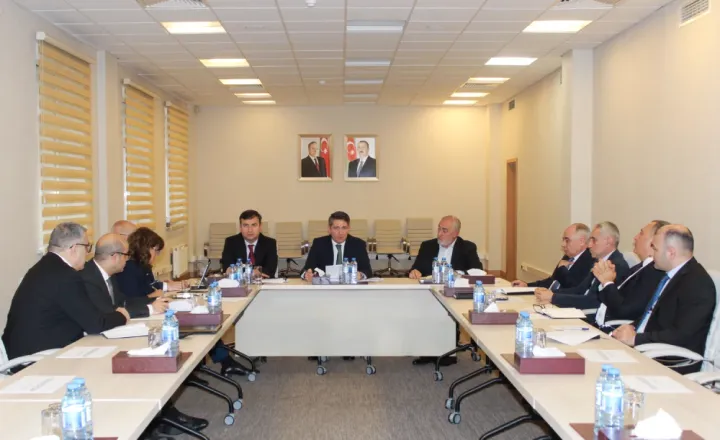
Suveren yaşıl istiqrazlar üzrə İşçi Qrupun ilk iclası keçirilib

Xarici ölkələrdə Azərbaycan vətəndaşlarına turizmlə bağlı 1,2 milyar dollarlıq xidmətlər göstərilib

Bu il Azərbaycanın xam neftinin qiyməti 16 dollar daha aşağı olub
Ən çox oxunanlar
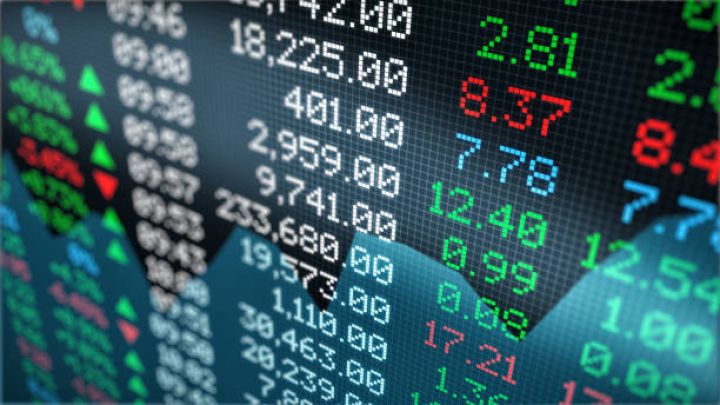
"Hazırda 33 səhm və 30 istiqraz listinqdədir"

“Kristal” və İtaliyanın “Zambaiti Parati” brendi əməkdaşlığını genişləndirir - Memorandum imzalandı

Azərbaycanın cari əməliyyatlar hesabının profisiti "əriyib" - 1 milyard dollarlıq azalma

Dövlət şirkətlərinin büdcə və maliyyə göstəriciləri yeni Qaydalar ilə monitorinq olunacaq
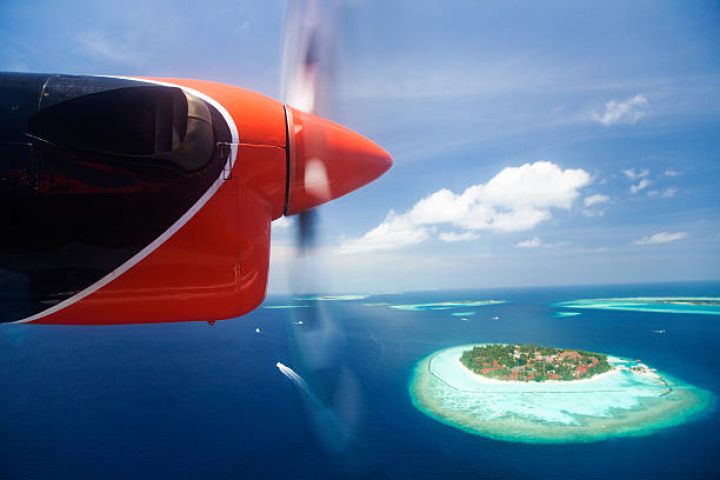
Azərbaycan ilə Maldiv arasında ümumvətəndaş pasport sahibləri viza tələbindən qarşılıqlı azad edilib
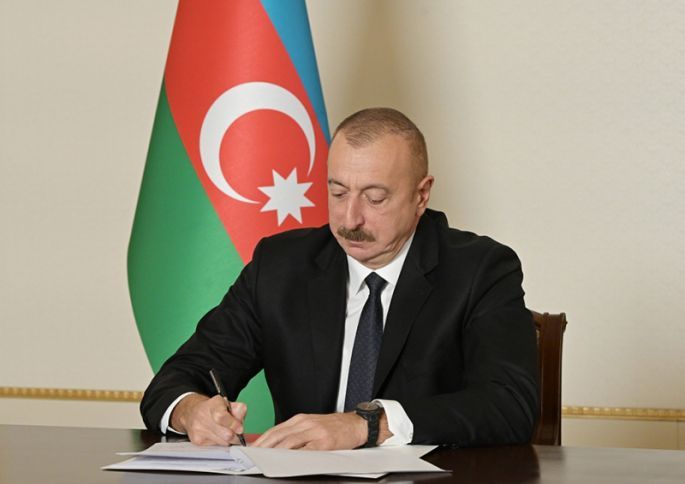
Naxçıvan Ali Məhkəməsinə sədr təyin edildi - SƏRƏNCAM
















.jpg)
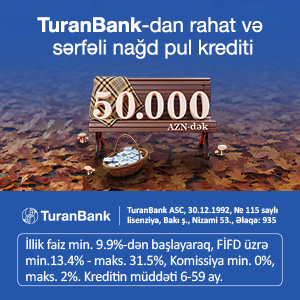







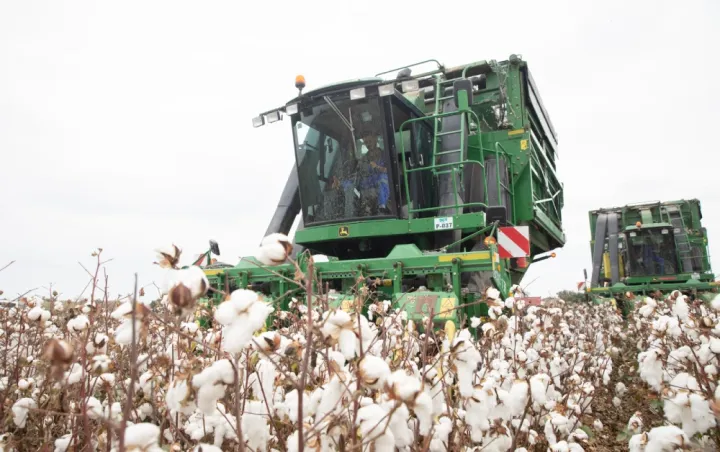

.jpg)
